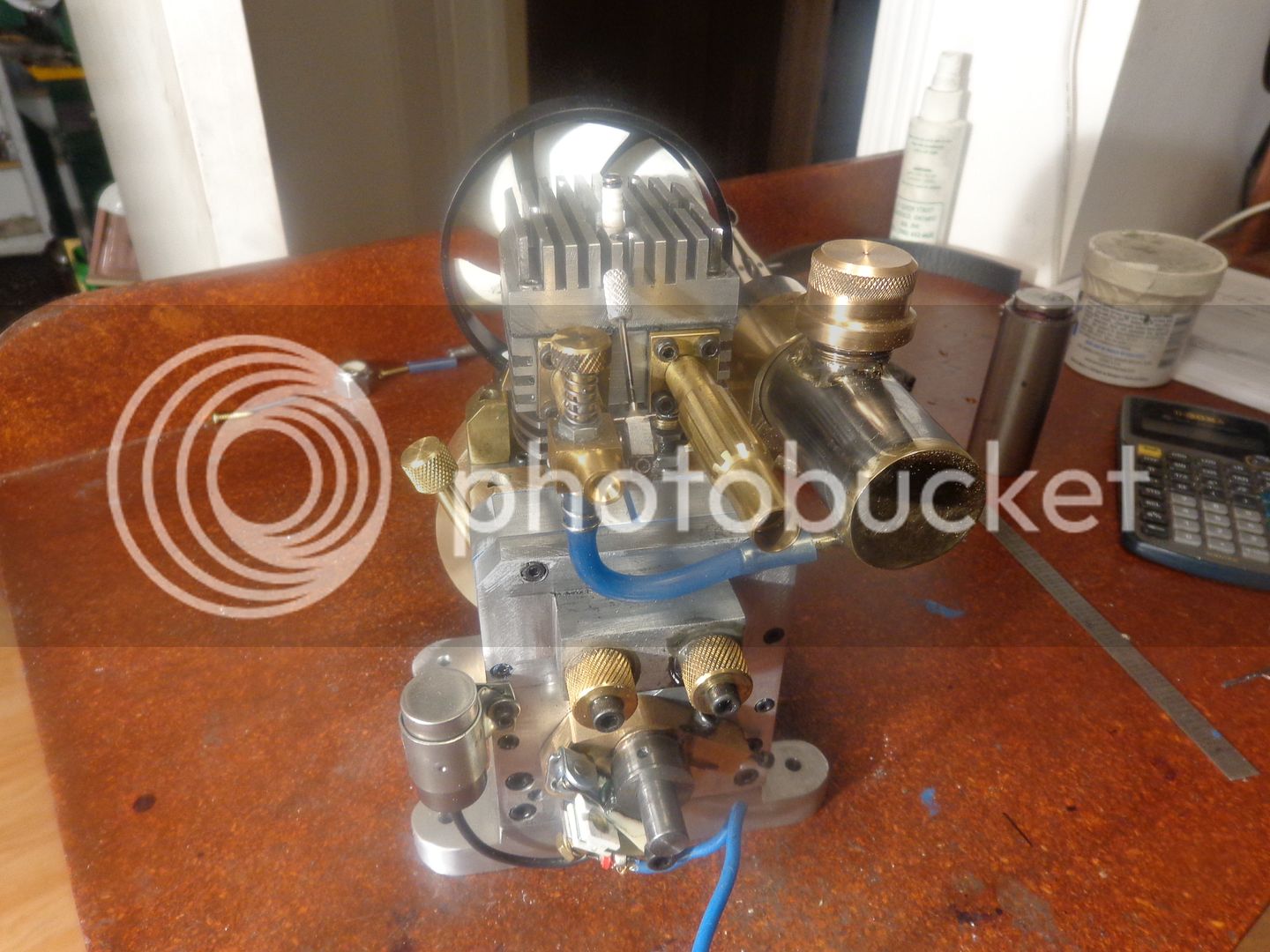The i.c. engines I build run on Coleman fuel (white gas) and have Viton o-rings on the pistons instead of cast iron rings. To provide some lubrication for the Viton rings, I add a small percentage of two cycle engine oil to the Coleman fuel. This works very well. Since my carburetors are all of the venturi/no float variety, the top of the gas tank must set lower than the center of the carburetor to avoid flooding and draining the fuel tank. This always results in the fuel line configuration you see in this picture. I have found that when one of these engines have been ran, then left to set for a week or so, the oil separates from the Coleman fuel and collects in a rather "jellied" mass at the low point in the fuel line. This means that the fuel line must be pulled off the carburetor and the "jellied mass" of oil squeezed out of the line before the fuel will flow freely and let the engine start when the fuel line is reconnected to the carburetor. Since I don't have this issue with my chainsaw or weed whacker, which run on pump gasoline and two cycle engine oil, I wonder if this occurrence is particular to Coleman fuel. Has anyone else experienced this?---Brian


































































